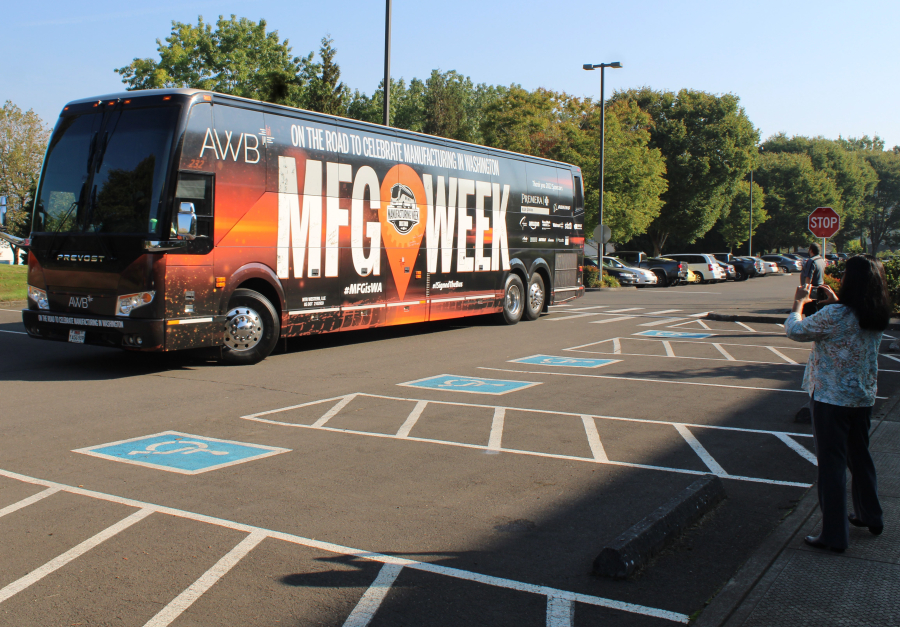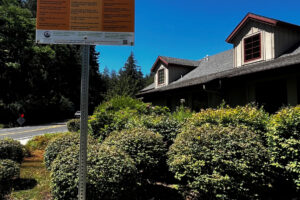The Association of Washington Business took to the road last week to highlight the importance of the manufacturing sector on the state’s economy and highlight “modern manufacturing” jobs available to Washington students.
The group’s sixth annual manufacturing week bus tour stopped at nearly 30 manufacturing facilities across Washington, Oct. 6-13.
On Monday, Oct. 10, the bus tour pulled into Camas’ Analog Devices, Inc. (ADI) wafer fabrication facility (commonly called a “fab” in the semiconductor industry) off Northwest Pacific Rim Boulevard.
One of the Massachusetts-based company’s two Portland-area wafer fabs — the other is in Beaverton, Oregon — the Camas facility employs 450 workers; operates 24 hours a day, seven days a week; and creates semiconductor products used in everything from cell phones, computers and automobiles to NASA’s Mars Exploration Rovers.
On Monday, ADI managers touted the Camas site’s recent expansions, commitment to decreasing its environmental footprint and abundance of entry-level jobs that pay over minimum wage and offer upward mobility within the company.




